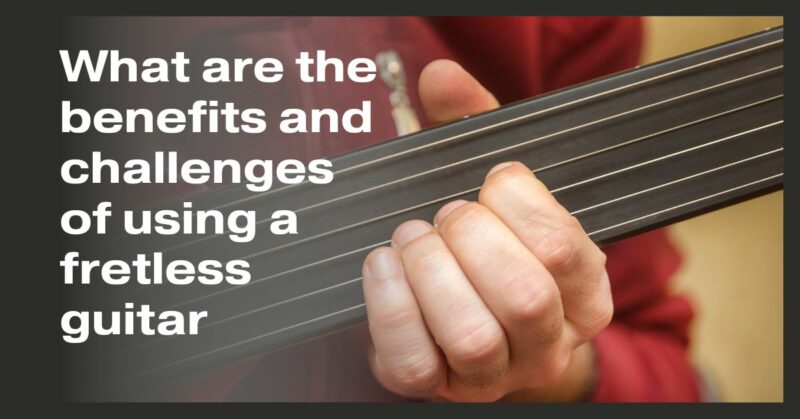Guitarists are familiar with the traditional fretted guitar, where metal frets divide the fingerboard into distinct intervals, aiding in precise note placement. However, the world of guitars also includes the intriguing fretless guitar, a unique instrument without frets. Playing a fretless guitar offers a distinctive set of benefits and challenges that make it a rewarding but demanding experience. In this article, we will delve into the advantages and difficulties of using a fretless guitar.
Benefits of Playing a Fretless Guitar:
- Tonal Versatility: Fretless guitars provide an extended range of tonal possibilities compared to their fretted counterparts. Without fixed frets dictating pitch, you have the freedom to produce microtonal and sliding effects that add rich expressiveness to your music. This versatility can be especially advantageous in genres like jazz, world music, and experimental styles.
- Expressive Control: Fretless guitars demand a high level of fingerboard awareness and precision. This increased tactile connection between the player and the instrument allows for a deeper level of expression. You can control pitch, vibrato, and sliding with incredible nuance, creating emotionally charged and evocative music.
- Improved Ear Training: Playing a fretless guitar sharpens your ear and improves your intonation skills. Since you rely solely on your ear and muscle memory to find the correct pitches, it can lead to significant improvements in your overall musicianship and ability to play in tune.
- Unique Artistic Expression: Fretless guitars are a canvas for creative exploration. Musicians can develop their unique playing styles and signature sounds, making their music stand out in a crowded musical landscape.
Challenges of Playing a Fretless Guitar:
- Intonation: The most significant challenge with fretless guitars is achieving accurate intonation. Without frets to guide finger placement, it’s easy to produce off-pitch notes, especially for beginners. Consistently hitting the correct pitch requires rigorous practice and a highly trained ear.
- Finger Pressure and Technique: Fretless guitarists must develop precise finger pressure and technique to prevent notes from going sharp or flat. It’s essential to find the delicate balance between pressing too hard and too lightly on the strings.
- String Buzz and Noise: Fretless guitars are more susceptible to string noise and buzzing, particularly when executing slides or legato techniques. Controlling these artifacts can be challenging and may require modifications to your playing style or setup.
- Maintenance: Fretless guitars demand meticulous maintenance, as the strings can wear down the fingerboard over time. Regular re-fretting or fingerboard resurfacing may be necessary to maintain optimal playability.
- Transition from Fretted Guitar: If you’re transitioning from a fretted guitar to a fretless one, be prepared for a learning curve. The muscle memory and techniques developed on a fretted instrument will require adjustment to adapt to the fretless fingerboard.
Conclusion
Playing a fretless guitar can be an incredibly rewarding and unique musical journey. The enhanced tonal expressiveness and artistic possibilities it offers can lead to captivating and evocative performances. However, the challenges of achieving precise intonation, controlling string noise, and adapting to the instrument’s demands require dedication and practice. Whether you’re an experienced guitarist looking to explore new horizons or a beginner curious about the fretless world, embracing the benefits and challenges of a fretless guitar can lead to a deeper and more enriched musical experience.


